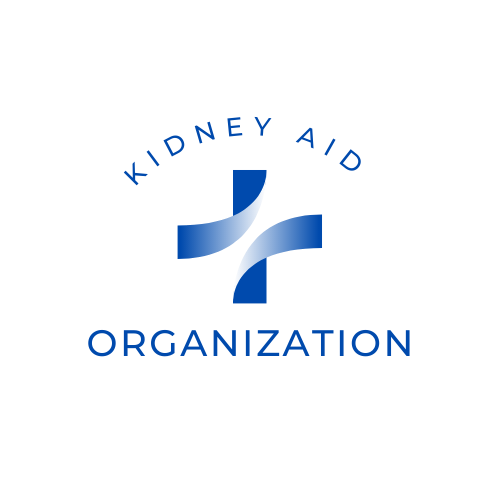First-Line Treatment Options for CKD
What is the first line treatment for CKD? Chronic kidney disease (CKD) is a long-term condition in which the kidneys are damaged and cannot function properly. CKD can lead to various complications, including high blood pressure, anemia, bone disease, and cardiovascular disease. The treatment of CKD aims to slow down the progression of the disease, prevent complications, and improve the quality of life of the patient. Here are some first-line treatment options for CKD:
1. Lifestyle modifications
Lifestyle modifications are essential in the management of CKD. The following lifestyle changes may help slow down the progression of the disease:
- Dietary modifications: Patients with CKD are advised to follow a low-protein, low-sodium, low-potassium, and low-phosphorus diet. A dietitian can provide guidance on the appropriate dietary modifications based on the patient's individual needs.
- Exercise: Regular physical activity can help lower blood pressure, reduce the risk of cardiovascular disease, and improve overall health. Patients with CKD should aim for at least 30 minutes of moderate-intensity exercise per day.
- Smoking cessation: Smoking can worsen kidney function and increase the risk of cardiovascular disease. Patients with CKD are advised to quit smoking.
- Weight management: Obesity is a risk factor for CKD and can worsen the disease. Patients with CKD are advised to maintain a healthy weight through a combination of diet and exercise.
2. Medications
Medications are commonly used in the management of CKD. The following medications may be prescribed as first-line treatment:
- ACE inhibitors and ARBs: ACE inhibitors and ARBs are blood pressure-lowering medications that can also help protect the kidneys. They are recommended for patients with CKD who have proteinuria (excessive protein in the urine).
- Diuretics: Diuretics are medications that help remove excess fluid from the body. They may be prescribed to manage fluid overload in patients with CKD.
- Phosphate binders: Phosphate binders are medications that help reduce the levels of phosphorus in the blood. They may be prescribed to manage hyperphosphatemia (high levels of phosphorus in the blood) in patients with CKD.
- Erythropoiesis-stimulating agents (ESAs): ESAs are medications that stimulate the production of red blood cells. They may be prescribed to manage anemia in patients with CKD.
3. Dialysis
Dialysis is a medical procedure that is used to remove waste products and excess fluids from the blood when the kidneys can no longer perform this function. There are two main types of dialysis: hemodialysis and peritoneal dialysis.
Hemodialysis
Hemodialysis is the most common type of dialysis. It involves using a machine to filter the blood outside of the body. During the procedure, the patient's blood is pumped out of their body and through a dialysis machine, where it is filtered before being returned to the body. Hemodialysis is typically performed at a dialysis center or hospital, and the patient usually undergoes the procedure three times a week. Each session typically lasts for three to four hours.
Peritoneal dialysis
Peritoneal dialysis is an alternative to hemodialysis that can be performed at home. During peritoneal dialysis, a sterile solution is introduced into the patient's abdomen through a catheter. The solution remains in the abdomen for a period of time, during which waste products and excess fluids are drawn out of the bloodstream and into the solution. The solution is then drained out of the abdomen and discarded. Peritoneal dialysis can be performed on a continuous basis, either during the day or while the patient is asleep. This makes it a more flexible option than hemodialysis, which requires the patient to visit a dialysis center several times a week.
Choosing the right type of dialysis
The choice of dialysis type will depend on the patient's individual circumstances and preferences. Hemodialysis is usually the preferred option for patients who have medical conditions that make peritoneal dialysis unsuitable, such as a history of abdominal surgery or certain infections. Peritoneal dialysis may be preferred for patients who have difficulty traveling to a dialysis center or who want more flexibility in their treatment schedule.
Potential complications
Dialysis is generally safe and well-tolerated, but there are some potential complications that patients should be aware of. These can include:
- Infection at the site of the catheter or access point
- Low blood pressure
- Muscle cramps
- Nausea and vomiting
- Itching
- Sleep problems
Patients who experience any of these symptoms should contact their healthcare provider for advice.
4. Kidney transplant
A kidney transplant involves replacing a patient's damaged kidney with a healthy kidney from a donor. Kidneys for transplant can come from living or deceased donors. A living donor is usually a family member or friend of the patient who is a good match for the patient's blood type and tissue type. A deceased donor is someone who has recently died and has chosen to donate their organs.
Kidney transplant is considered the best treatment option for end-stage CKD, as it can improve the patient's quality of life and increase their life expectancy. However, not all patients are suitable candidates for kidney transplant. The patient's overall health, age, and medical history are taken into consideration when determining if they are eligible for a transplant.
The transplant process
The kidney transplant process involves several steps, including:
- Evaluation: The patient undergoes a thorough medical evaluation to determine if they are a suitable candidate for a kidney transplant. This evaluation may include blood tests, imaging tests, and consultations with various healthcare providers.
- Waitlisting: If the patient is deemed eligible for a transplant, they are placed on a national waitlist to receive a kidney from a deceased donor.
- Living donor transplant: If the patient has a living donor who is a suitable match, the transplant can be scheduled in advance. The living donor undergoes a thorough medical evaluation before the transplant.
- Surgery: The transplant surgery involves removing the damaged kidney and replacing it with the healthy donor kidney.
- Recovery: After the surgery, the patient will need to stay in the hospital for several days and may need to take immunosuppressant medications to prevent their body from rejecting the donor kidney.
Risks and complications
Like any major surgery, kidney transplant carries some risks and potential complications. These can include:
- Rejection of the donor kidney
- Infection
- Bleeding
- Blood clots
- Side effects of immunosuppressant medications, such as high blood pressure, diabetes, and increased risk of infections
Patients who receive a kidney transplant will need to undergo regular monitoring to ensure that the donor kidney is functioning properly and to detect any complications early.
Success rates
Overall, kidney transplant is considered to be a highly successful procedure. The success rate varies depending on a number of factors, including the age and health of the patient, the quality of the donor kidney, and the patient's adherence to their medication regimen. According to the United Network for Organ Sharing (UNOS), the one-year survival rate for kidney transplant recipients is approximately 96%, and the five-year survival rate is approximately 84%.
Conclusion
Chronic kidney disease is a serious and progressive condition that requires long-term management. The first-line treatment options for CKD include lifestyle modifications, medications, dialysis, and kidney transplant. These treatment options can help slow down the progression of the disease, prevent complications, and improve the quality of life of the patient. Patients with CKD should work closely with their healthcare providers to develop a treatment plan that is tailored to their individual needs.
Regular monitoring of kidney function and management of other medical conditions, such as high blood pressure and diabetes, are also important in the management of CKD. By following a comprehensive treatment plan and making lifestyle modifications, patients with CKD can lead a fulfilling life and minimize the risk of complications associated with the disease.

